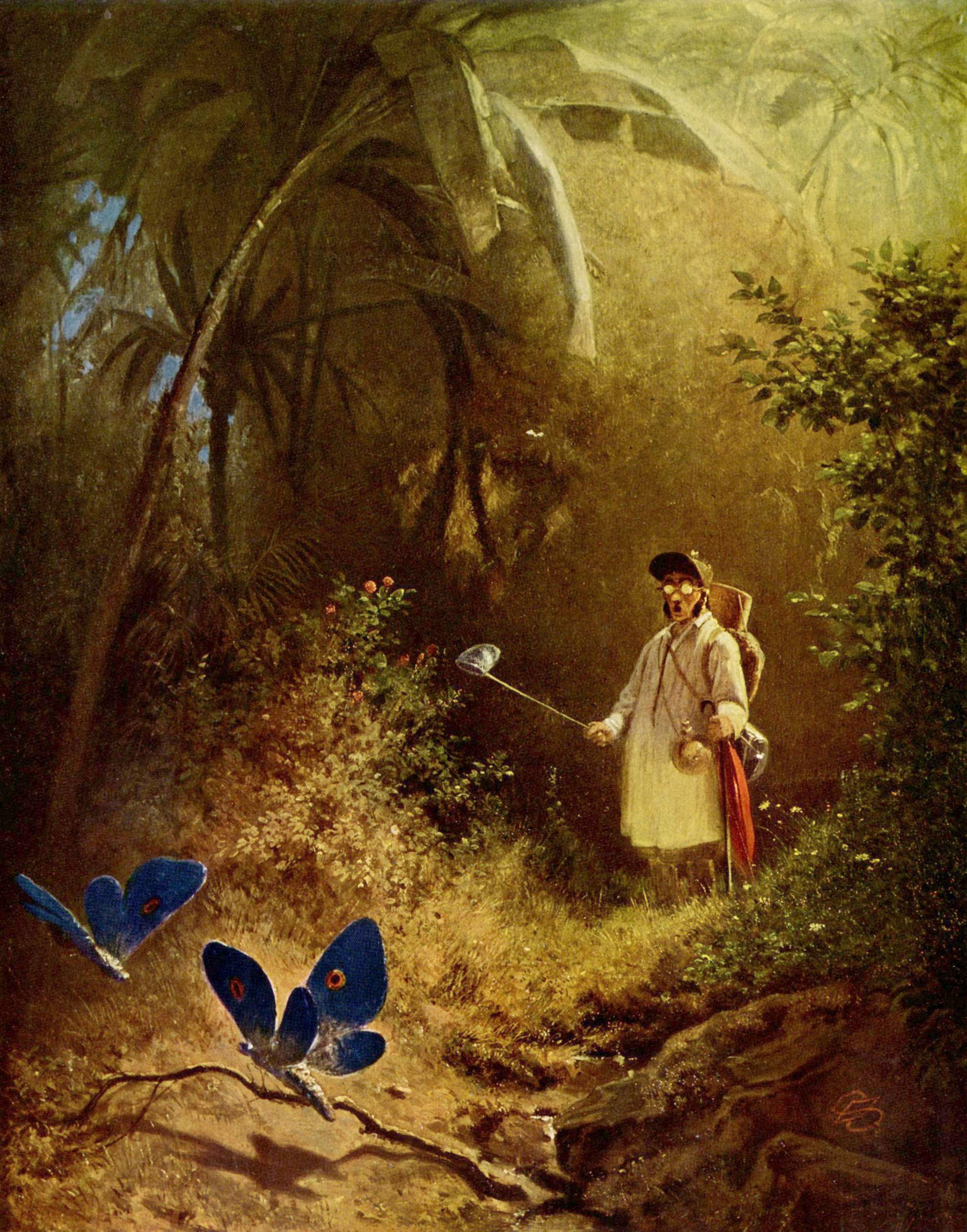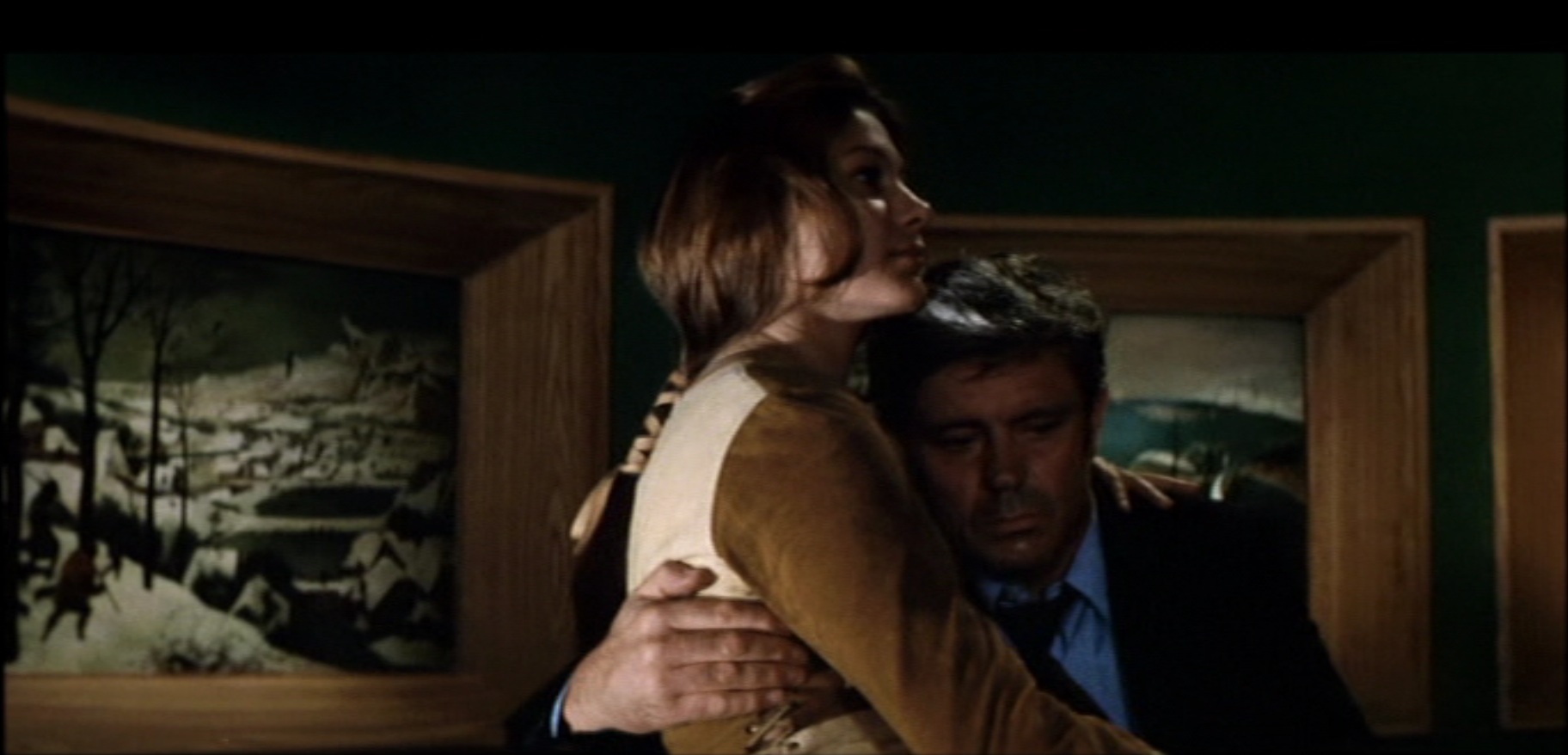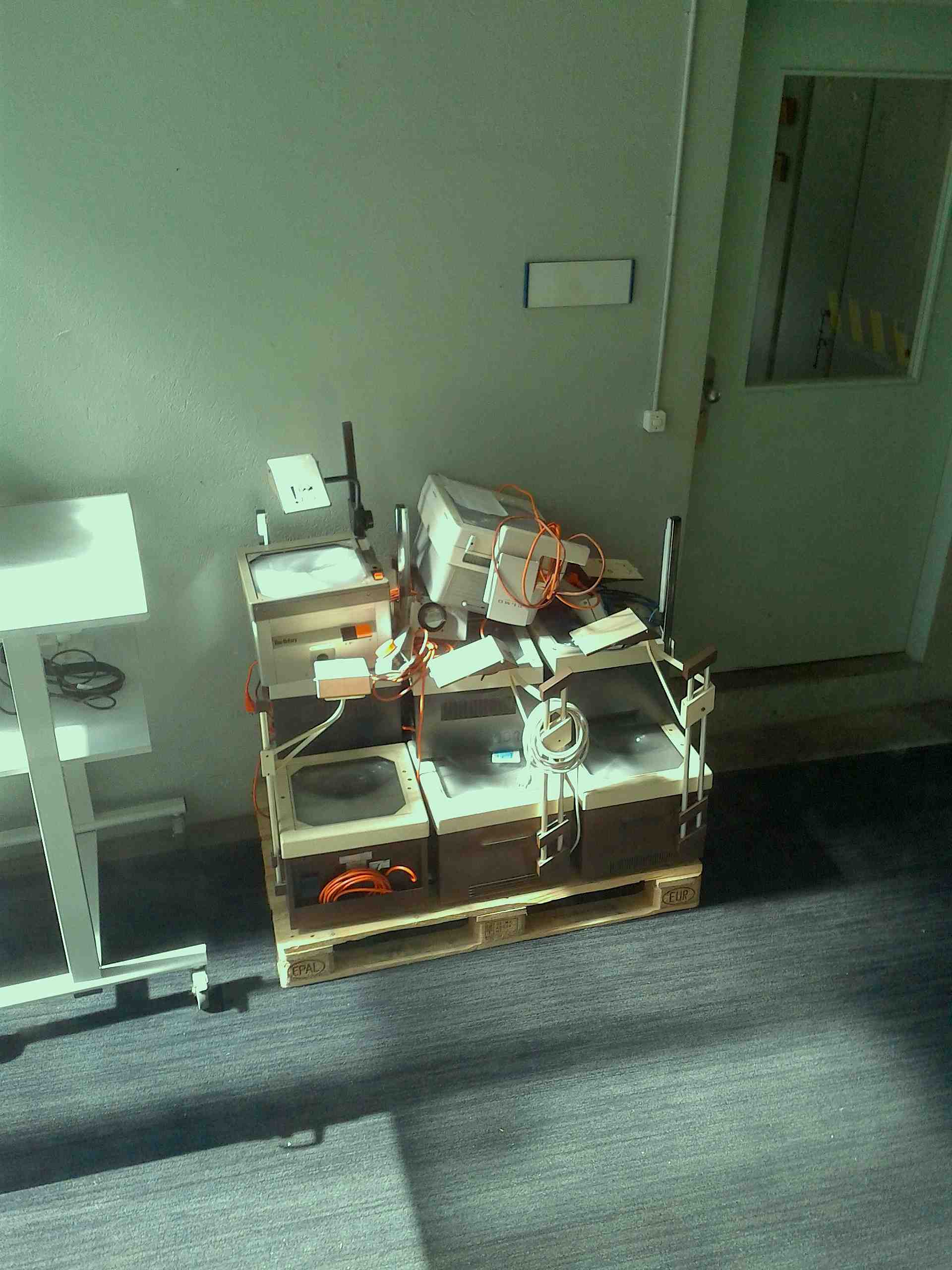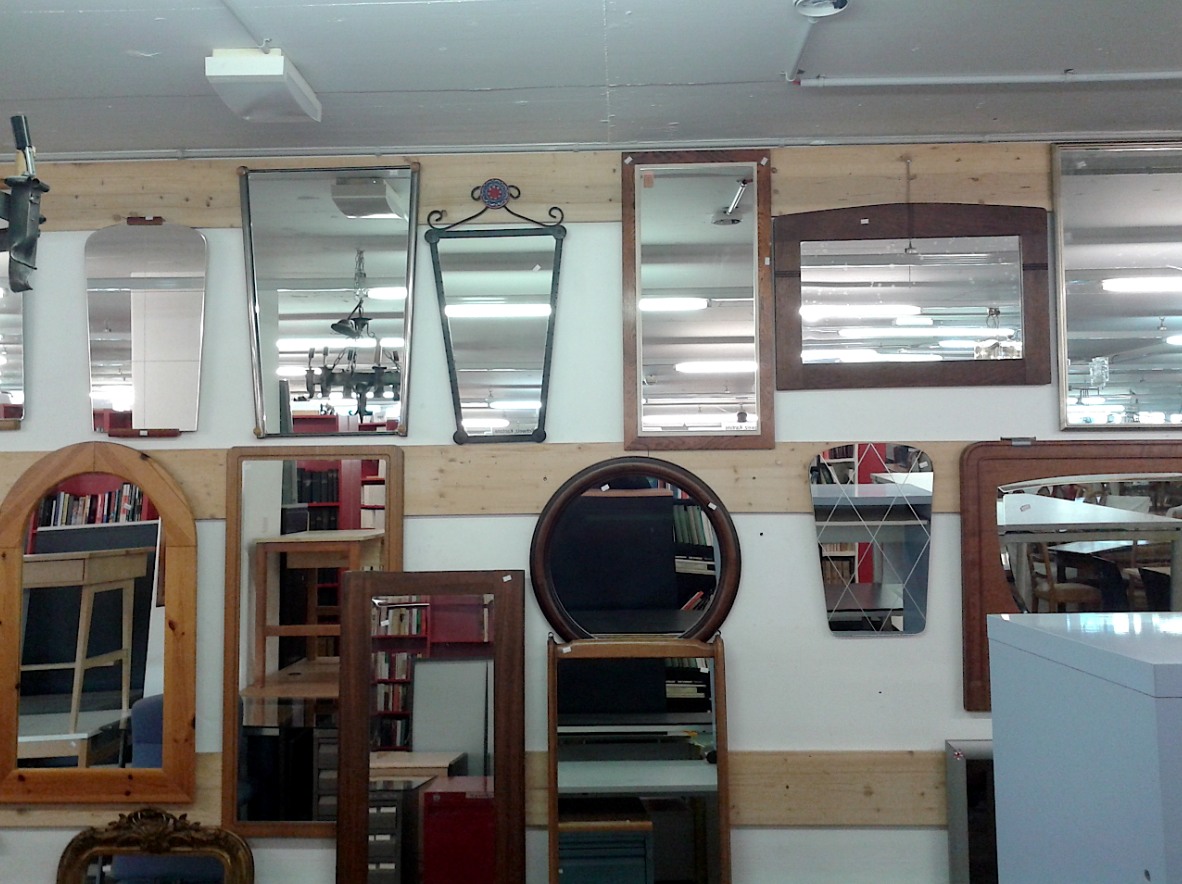M
I
C
R
O
S
T
O
R
Y
O
F
A
R
T
........................................................

NOW COMPLETED:

........................................................
MICROSTORY OF ART
ONLINE JOURNAL FOR ART, CONNOISSEURSHIP
AND CULTURAL JOURNALISM
........................................................
INDEX | PINBOARD | MICROSTORIES |
FEATURES | SPECIAL EDITIONS |
HISTORY AND THEORY OF ATTRIBUTION |
ETHNOGRAPHY OF CONNOISSEURSHIP |
SEARCH

........................................................



 >MICROSTORIES
>MICROSTORIES
- Richard Serra
- Martin Scorsese
- Claude Simon
- Sunshine
- Werner Herzog
- The Creation
- Marcel Duchamp
- Nino Rota
- Wölfflin and Woolf
- Hansjörg Schneider
- Kraftort Arkadien
- Visual Biography
- Schlaraffenleben
- Die Geisteswissenschaften
- The Voyeur
- Buzzword Sustainability
- Paul Verlaine
- Tao Yuanming
- New Beginning
- Seneca
- Still Lifes
- Charles Baudelaire
- Frédéric Chopin
- The Art History of Sustainability
- Wang Wei
- Solarpunk
- Historians of Light
- Lepanto
- Renaturalization
- Plates
- Snow in Provence
- Learning to See
- Picasso Dictionaries
- Peach Blossom Spring
- Picasso Tourism
- Tipping Points
- Sviatoslav Richter
- Weather Reports
- Treasure Hunt
- Another Snowscape in Picasso
- Picasso in 2023
- Dragon Veins
- The Gloomy Day
- The Art of the Pentimento
- Reforestation
- The Status of Painting
- Emergency Supply
- Punctuality
- Watching Traffic
- Zhong Kui
- How Painting Survived the 1990s
- Confirmation Bias
- Sustainability and Luxury
- Garage Bands
- Picasso and Artificial Intelligence
- Eyes of Tomorrow
- Picasso in 2023 2
- Gluing Oneself to Something
- Suburbia
- Bamboo
- Sustainability and Carpe Diem 1
- Interviews with Bruegel
- Sustainability and Carpe Diem 2
- Coffee & Sugar
- Bamboo 2
- Picasso in 2023 3
- Sustainability and Carpe Diem 3
- Cherry Orchard
- Old Magazines
- Chance
- Nick Drake
- Harlequin
- The Smartphone & the Art Book
- Atlas Syndrome
- The Kitchen
- Atlas Syndrome 2
- Consideration
- Tori Amos
- School
- Orchard Auctioning Day
- The Hundred Years’ War
- Sócrates
- Chameleon
- Nefertiti Bust
- Picasso as a Computer
- Sunflowers
- Philemon & Baucis
- Ode to the Radio
- Childhood
- Wimmelbild
- Restitution
- Nick Drake 2
- Wishful Thinking
- Sundays
- The Independent Scholar
- September
- The Fisherman by Pirosmani
- Microadventure
- Sociology
- Salvator Mundi
- Chillon
- Appassionata
- Amber
- Homer
- Berlin
- Planet Walk
- Improvisation
- Seeing Picasso
- These Nice Kids
- Robber
- The One
- The Sea Turtle
- Zoo
- Through the Hush
- Wunderkammer
- I Do Not Seek, I Find
- Shopping Mall
- Food Hamper
- The Secretary
- This Gate
- Nor Rainy Day
- House on a Hill
- Beautiful Island
- Second-hand Bookstore
- Flat
- Slap in the Face
- Serra, Wenkenpark
- Apologies
- The Bells
- Nordmann Fir
- Picasso Wanting To Be Poor
- Picasso, Pirosmani
- A Brief History of Sculpture
- 24 Sunsets
- Rusty Phoenix
- Glove
- Wintry Stanza
- A Song
- Like A Beatle
- Catching An Orange
- Solar Bees
- Permaculture

 >FEATURES
>FEATURES
- Van Gogh On Connoisseurship
- Two Museum’s Men
- Ende Pintrix and the City in Flames
- Titian, Leonardo and the Blue Hour
- The Man with the Golden Helmet: a documentation
- Un Jury d’admission à l’expertise
- Learning to See in Hitler’s Munich
- Leonardo da Vinci and Switzerland
- The Blue Hour Continued
- The Blue Hour in Louis Malle
- Kafka in the Blue Hour
- Blue Matisse
- Blue Hours of Hamburg and LA
- A Brief History of the Cranberry
- The Other Liberale in the House
- The Blue Hour in Raphael
- Who Did Invent the Blue Hour?
- Monet on Sustainability
- Velázquez and Sustainability
- The Blue Hour in Guillaume Apollinaire
- Van Gogh on Sustainability
- The Blue Hour in Marcel Proust
- Picasso and Sustainability
- The Contemporary Blue Hour
- The Blue Hour in 1492
- The Blue Hour in Hopper and Rothko
- Hopper and Sustainability
- The Blue Hour in Ecotopia
- The Hour Blue in Joan Mitchell
- Explaining the Twilight
- The Twilight of Thaw
- The Blue Hour in Pierre Bonnard
- Explaining the Twilight 2
- Picasso on Stalin
- Rubens on Sustainability
- The Salvator Mundi in Bruegel and Rubens
- The Blue Hour in Leonardo da Vinci and Poussin
- The Blue Hour in Rimbaud
- Faking the Dawn
- Frost and Thaw in Ilya Ehrenburg
- Picasso, Stalin, Beria
- Picasso, Solzhenitsyn and the Gulag
- Shostakovich on Picasso
- Hélène Parmelin in 1956
- Historians of Picasso Blue
- Picasso Travelling to Moscow 1
- The Blue Hour in Caravaggio
- Picasso Travelling to Moscow 2
- Picasso, the Knife Game and the Unsettling in Art
- Some Notes on Leonardo da Vinci and Slavery
- Picasso Moving to the Swiss Goldcoast
- The Blue Hour in Camus
- The Blue Hour in Symbolism and Surrealism
- Caspar David Friedrich in His Element
- Exhibiting the Northern Light
- Caspar David Friedrich in His Element 2
- Robert Schumann and the History of the Nocturne
- The Blue Hour in Robert Schumann
- Caspar David Friedrich and Sustainability
- The Twilight of Thaw 2
- Multicultural Twilight
- The Blue Hour in Anton Chekhov
- The Blue Hour in Medieval Art
- Twilight Photography
- The Blue Hour in Bob Dylan
- Iconography of Optimism

 >SPECIAL EDITIONS
>SPECIAL EDITIONS
- Visions of Cosmopolis
- Mona Lisa Landscapes
- Turner and Ruskin at Rheinfelden
- Painters On TV & On TV
- Spazzacamini in Art
- A Last Glance at Le Jardin de Daubigny
- The Experimental Cicerone
- A Dictionary of Imaginary Art Historical Works
- Iconography of Blogging
- Begegnung auf dem Münsterplatz
- Cecom
- Das Projekt Visual Apprenticeship
- Those Who See More
- A Fox on Seeing with the Heart
- Sammlung Werner Weisbach
- Daubigny Revisited
- Some Salvator Mundi Microstories
- Some Salvator Mundi Afterthougths
- Some Salvator Mundi Variations
- Some Salvator Mundi Revisions
- A Salvator Mundi Questionnaire
- A Salvator Mundi Puzzle
- Unknown Melzi
- Francis I and the Crown of Charlemagne
- From Amboise to Fontainebleau
- Drones Above Chambord
- Looking Back At Conques
- Flaubert At Fontainebleau
- Images of Imperial Ideology
- The Chronicles of Santa Maria delle Grazie
- Seeing Right Through Someone
- Melzi the Secretary
- Eying Glass
- A Foil to the Mona Lisa
- A Renaissance of the Cartoon
- Sketching a Family Tree
- Venetian Variations
- A Brief History of Digital Restoring
- A Consortium of Painters
- Leonardeschi and Landscape
- A Christ in Profile
- Learning to See in Spanish Milan
- A History of Gestures
- Leonardo and Josquin
- A Renaissance of the Hybrid
- Suida and Heydenreich
- The Watershed
- Three Veils
- From Beginning to End
- Connoisseurship of AI
- Twilight and Enlightenment
- The Blue Hour in Chinese Painting
- Dusk and Dawn at La Californie
- Iconography of Sustainability
- The Blue Hour in Goethe and Stendhal
- The Sky in Verlaine
- The Blue Hour in Paul Klee
- Iconography of Sustainability 2
- The Blue Hour in Charles Baudelaire
- From Bruegel to Solarpunk
- Some Salvator Mundi Documentaries
- Some More Salvator Mundi Monkey Business
- The Windsor Sleeve
- Brigitte Bardot’s Encounter with Picasso
- Art Historians and Historians
- A Salvator Mundi Chronicle
- The Salvator Mundi and the French Revolution
- The Fontainebleau Group
- The Encounter of Harry Truman with Pablo Picasso
- The Fontainebleau Group Continued
- The Windsor Sleeve Continued
- The Salvator Mundi in Early Netherlandish Painting 1
- Some Salvator Mundi Resources
- A New Salvator Mundi Questionnaire
- The Woman in Picasso
- The Yarborough Group
- Melzi, Figino and the Mona Lisa
- The Yarborough Group Continued
- A Salvator Mundi Global History
- The Salvator Mundi in Medieval Art
- The Salvator Mundi in Medieval Art 2
- The Salvator Mundi in Early Netherlandish Painting 2


 >HISTORY AND THEORY OF ATTRIBUTION
>HISTORY AND THEORY OF ATTRIBUTION
- The Mysterious »Donna Laura Minghetti-Leonardo«
- Assorted Demons of Connoisseurship
- Panofsky Meets Morelli
- Discovering the Eye of Sherlock Holmes
- Handling the Left-handed Hatchings Argument
- Visual History of Connoisseurship
- Alexander Perrig
- Connoisseurship in 2666
- What Postmodernity Has Done to Connoisseurship
- Dividing Four Fab Hands
- A Leonardesque Ambassador
- Test Cases in Connoisseurship
- A Raphael Expertise
- How to Tell Titian from Giorgione
- Louise Richter
- The Unique Property in the History of Connoisseurship
- An Expertise by Berenson
- The Book of Expertises
- An Album of Expertises
- An Expertise by Friedländer
- A Salvator Mundi Provenance
- How to Tell Leonardo from Luini
- An Expertise by Crowe and Cavalcaselle
- An Expertise by Bayersdorfer
- An Expertise by Hermann Voss
- An Expertise by Hofstede de Groot
- Leonardeschi Gold Rush
- An Unknown »Vermeer«
- An Expertise by Roberto Longhi
- An Expertise by Federico Zeri
- A Salvator Mundi Geography
- A Salvator Mundi Atlas
- The Bias of Superficiality
- 32 Ways of Looking at a Puzzle
- James Cahill versus Zhang Daqian
- Five Fallacies in Attribution
- On Why Art History Cannot Be Outsourced to Art Dealers
- On Why Artificial Intelligence Has No Place in Connoisseurship
- Salvator Mundi Scholarship in 2016
- Leonardo da Vinci at the Courts
- The Story of the Lost Axe
- The Last Bruegel
- A Titian Questionnaire
- On Where and Why the Salvator Mundi Authentication Did Fail
- The Problem of Deattribution

 >ETHNOGRAPHY OF CONNOISSEURSHIP
>ETHNOGRAPHY OF CONNOISSEURSHIP
MICROSTORY OF ART
ONLINE JOURNAL FOR ART, CONNOISSEURSHIP
AND CULTURAL JOURNALISM
........................................................

***
ARCHIVE AND FURTHER PROJECTS

1) PRINT


***
2) E-PRODUCTIONS


........................................................

........................................................

........................................................
FORTHCOMING:


***
3) VARIA

........................................................

........................................................

........................................................

........................................................

........................................................
***
THE GIOVANNI MORELLI MONOGRAPH

- The Giovanni Morelli Monograph
........................................................
MICROSTORY OF ART
ONLINE JOURNAL FOR ART, CONNOISSEURSHIP AND CULTURAL JOURNALISM
HOME
MICROSTORY OF ART 
ONLINE JOURNAL FOR ART, CONNOISSEURSHIP AND CULTURAL JOURNALISM

INDEX OF DOCUMENTS
DOCUMENTS


Giovanni Morelli and the Badrutt’s Palace Hotel Madonna
(Read more: Giovanni Morelli and the Badrutt’s Palace Hotel Madonna)
Brueghel/Tarkovsky Zero Gravity
(Read more: Brueghel/Tarkovsky Zero Gravity)
The Overhead Projector – a Memento Mori (2014)
(Read more: The Overhead Projector – a Memento Mori (2014))
Bonaventura Genelli and Photography (1839)
(Read more: Bonaventura Genelli and Photography (1839))
Giovanni Morelli and the Badrutt’s Palace Hotel Madonna
As a supplement to the Neue Zürcher Zeitung’s virtual exploration of the Badrutt’s Palace Hotel at St. Moritz (see here: http://www.nzz.ch/panorama/ein-hotel-gibt-seine-geheimnisse-preis-1.18457085), we offer here an seemingly unknown document as to the history of the hotel’s ›Raphael‹ (see here: http://www.nzz.ch/panorama/ist-die-dame-echt-1.18460537). Speaking is the Austrian journalist Sigmund Münz (1859-1934; see: http://www.biographien.ac.at/oebl/oebl_M/Muenz_Sigmund_1859_1934.xml).
xxxx
(Picture: badruttspalace.com)
»Damals [August of 1889] machte im Engadin eine Rafael’sche ›Sixtinische Madonna‹ von sich sprechen, die der nun verstorbene Badrutt, Besitzer des ›Hotel Kulm‹ in St. Moritz-Dorf, in Modena aufgetrieben und für einen nicht unbeträchtlichen Preis erstanden. Ich hatte sie gerade am Morgen, Morelli einige Tage früher in der Galerie im Parterre von Kulm gesehen. Badrutt, der findige Doyen unter den Gastwirthen des Engadins – ein kleiner Mann mit einem Silenkopfe, umschleierten Augen, kurzem, struppigem Barte – behauptete, gestützt auf die Autorität eines apokryphen Kunstforschers, er besässe nun die Original-Madonna, die berühmte Dresdner Madonna aber wäre nur eine alte, von Girolamo da Carpi (http://en.wikipedia.org/wiki/Girolamo_da_Carpi) gemalte Copie. Um dies zu beweisen, öffnete der gute Mann alle Schleusen seiner Beredsamkeit. Er hielt ein colorirtes Abbild des Dresdner Gemäldes in Händen und sprach: ›Vergleichen Sie meine Madonna da mit der Dresdner. Diese hat Füsse wie eine Tiroler Magd, meine Madonna dagegen zierliche, göttliche Füsschen. Meine blickt aus wirklichen Wolken, die Dresdner aus einem Bräu, der eher Schnee als Wolken gleicht. Auf der Dresdner ist der Saum des Kleides der Madonna grob röthlich, auf meiner fein braun; die Vorhänge zur Seite der Mutter Gottes sind dort lichtgrün, hier in dunklem satten Grün gehalten. Die Dresdner Madonna ist auf communem Zeug gemalt, meine auf Damast. Ergo – wer Augen hat, der sehe!‹
Wir [Sigmund Münz and Giovanni Morelli] sprachen auf unserer nächtlichen Wanderung von der Sache. Morelli aber schien mir nicht überzeugt, dass die echte Sixtinische Madonna nicht mehr in Elbe-Athen residire, sondern, nervenschwach geworden, ins Engadin gewandert sei. Er scherzte über den Graubündner Hotelier, der seinen eigenen Keller mit Veltliner Weinen, seine eigene Forellenfischerei, sein eigenes Orchester, seinen eigenen Gott habe und nun auf seine eigene Madonna schwöre.«
(Source: Sigmund Münz, Italienische Reminiscenzen und Profile, Wien 1898, p. 100f.)
………………………………………………………………………………………………………………………………………
Back to the Main Index of the Online Journal Microstory of Art: http://www.seybold.ch/Dietrich/MicrostoryOfArtINDEX
Back to the starting page of Dietrich Seybold’s homepage: http://www.seybold.ch/Dietrich/HomePage
Brueghel/Tarkovsky Zero Gravity
As we all know from Andrei Tarkovsky’s 1972 movie Solaris (http://en.wikipedia.org/wiki/Solaris_%281972_film%29) major works by Flemish painter Pieter Brueghel the Elder (http://en.wikipedia.org/wiki/Pieter_Bruegel_the_Elder) are housed by the library of the space station at the planet of Solaris. But this is not about an outer space supplement for the Pieter Brueghel oeuvre catalogue nor about the cultural references as such within that movie. Is is about something else that relates also to our contemplation of a work by Pieter Brueghel that was stimulated by a looking at a landscape piece by Richard Serra (http://www.seybold.ch/Dietrich/RichardSerra).
xxxx
And as the audience of that movie we are warned: a manoeuvre will result in zero gravity for 30 seconds at the station. This results in a remarkable sequence (https://www.youtube.com/watch?v=FcglyhUre4w), but not in an actual looking at Brueghel in a state of weightlessness (this is only what we, as the audience, experience, in case that the looking at people in a zero gravity space, affects our own feeling of space and gravity. Because we see people in a space of zero gravity, and we see also the works by Pieter Brueghel (that probably are there to remind the four seasons, and as such, conditions of living at the planet Earth, but we can also see, or at least imagine, Icarus as being there as well).
(Picture: Solaris DVD)
The two people we see already have looked at Brueghel, and as you can see from the screenshot above, they now look, if looking is the right word, at inner, mental images, being carried away by their thoughts, and haunted, possibly, by thoughts of hopelessness. And as you know the movie, you also know what happens after the thirty seconds (if thirty seconds is the right word here, where time and space might be distorted and reality and dream are melting).
Remarkable are also the several shots of the Return of the Hunters (http://en.wikipedia.org/wiki/The_Hunters_in_the_Snow) that give us a sense of floating into that winter landscape by Brueghel (and this in 1972, much ahead of our time with mechanical slide show effects, emulating such zooms or moving camera effects as standard features). And we realize that our looking at Brueghel is different from our museum’s view looking at Brueghel down here on Earth. Because the conditions have changed, and we feel space and gravity different (and a thirty seconds zero gravity effect within museums – and without warning – would probably do well down here on earth).
A last word as to the Stanisław Lem novel that Solaris, the 1972 movie and other movies are based upon (http://en.wikipedia.org/wiki/Solaris_%28novel%29): because this novel has interesting thoughts about the evolution of architecture on planet Earth, from Babylon (http://en.wikipedia.org/wiki/Babylon) to the age of the cosmodrome (see for example: http://en.wikipedia.org/wiki/Baikonur_Cosmodrome), and this, if one likes so, again under gravity conditions of outer space.
………………………………………………………………………………………………………………………………………
Back to the Main Index of the Online Journal Microstory of Art: http://www.seybold.ch/Dietrich/MicrostoryOfArtINDEX
Back to the starting page of Dietrich Seybold’s homepage: http://www.seybold.ch/Dietrich/HomePage
The Overhead Projector – a Memento Mori (2014)
What did I learn in school for life? Was it about the Pythagorean theorem (http://en.wikipedia.org/wiki/Pythagorean_theorem) or about the concept of osmosis (http://en.wikipedia.org/wiki/Osmosis)? Was it about how people do behave and how they interact? Was it about the observing of people how they were dealing with various technologies (of learning)? Or was it in the end about watching people in their trying to deal with a technological device, a thing called Overhead projector?
By accident I have become a witness, of this rather sad scene: of a whole family of Overhead projectors, disappearing into a somewhere outside our classrooms, reentering, I guess, a chain of recycling of technological devices, because of being hopelessly, hopelessly outdated.
May they rest in peace, with their scrolls of plastic folias, now being overruled by modern beamers and, probably, ubiquitous Powerpoint presentation. But we do remember their sculptural quality. And if I hear that the kids of today are much ahead of their teachers, if it comes to the dealing with contemporary technological devices (they seem to be, from what I hear, much ahead, for example, if it comes to the cutting of movies), there once was a time when mostly teachers knew to operate this thing. This thing called Overhead projector. May it rest in peace.
xxxx
The Overhead Projector – a Memento Mori (2014) (picture: DS)
………………………………………………………………………………………………………………………………………
Back to the Main Index of the Online Journal Microstory of Art: http://www.seybold.ch/Dietrich/MicrostoryOfArtINDEX
Back to the starting page of Dietrich Seybold’s homepage: http://www.seybold.ch/Dietrich/HomePage
Bonaventura Genelli and Photography (1839)
By September of 1839 German artist Bonaventura Genelli (http://en.wikipedia.org/wiki/Bonaventura_Genelli) who lived in Munich was informed: his younger friend, later connoisseur of art Giovanni Morelli (http://www.seybold.ch/Dietrich/ForthcomingGiovanniMorelliAPortrait) who stayed in Paris in 1839, had written – probably quite enthusiastic – about photography. While we do not have this firsthand account from Paris, dating from the very early days of Daguerreotypes (http://en.wikipedia.org/wiki/Daguerreotype ; http://www.getty.edu/art/gettyguide/artObjectDetails?artobj=53035), we have nonetheless Genelli’s reply, dating from September 29. And an excerpt of this yet unpublished letter is given here (source: Nachlass Genelli, Universitätsbibliothek Leipzig; Lionel von Donop’s 19th century copies of Genelli’s handwritten letters to Morelli; originals are in a private collection at Bergamo, Italy):
xxxx
»Daguerrsche Erfindungen u dem ähnliche werden der wirklichen Kunst nie schaden können, sollten diese auch noch so hoch gesteigert werden. Componiren kann man halt doch nicht durch Maschinen u wenn sie Gottvater selbst ausgehekt hätte! Für die Wissenschaften mögen diese Dinge Gott weiß wozu noch alles von Nutzen sein – auf die bildenden Künste angewendet würde mir ein solch dadurch hervorgebrachtes sogenanntes Kunstwerk den empörenden Eindruck machen wie etwa für die Zuschauer u Schauspieler wenn ein Pudel die Rolle des Mackbeth [sic] übernommen hätte – ob die Copirbruth vielleicht dadurch zu Grunde geht – was liegt daran?«

………………………………………………………………………………………………………………………………………
| MICROSTORY OF ART ONLINE JOURNAL FOR ART, CONNOISSEURSHIP AND CULTURAL JOURNALISM  (Picture: DS) COLLECTING WAYS OF LOOKING AT ART |
INDEX | PINBOARD | MICROSTORIES | FEATURES | SPECIAL EDITIONS | HISTORY AND THEORY OF ATTRIBUTION | ETHNOGRAPHY OF CONNOISSEURSHIP
MICROSTORY OF ART
ONLINE JOURNAL FOR ART, CONNOISSEURSHIP AND CULTURAL JOURNALISM
HOME
© DS